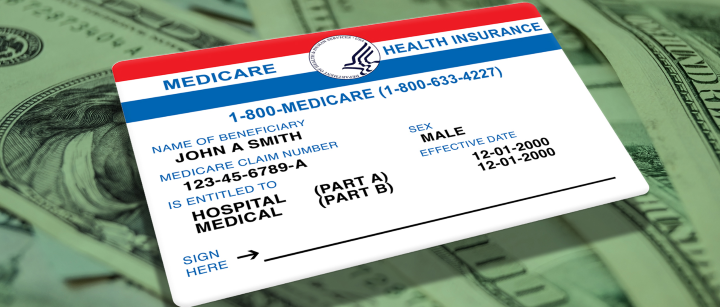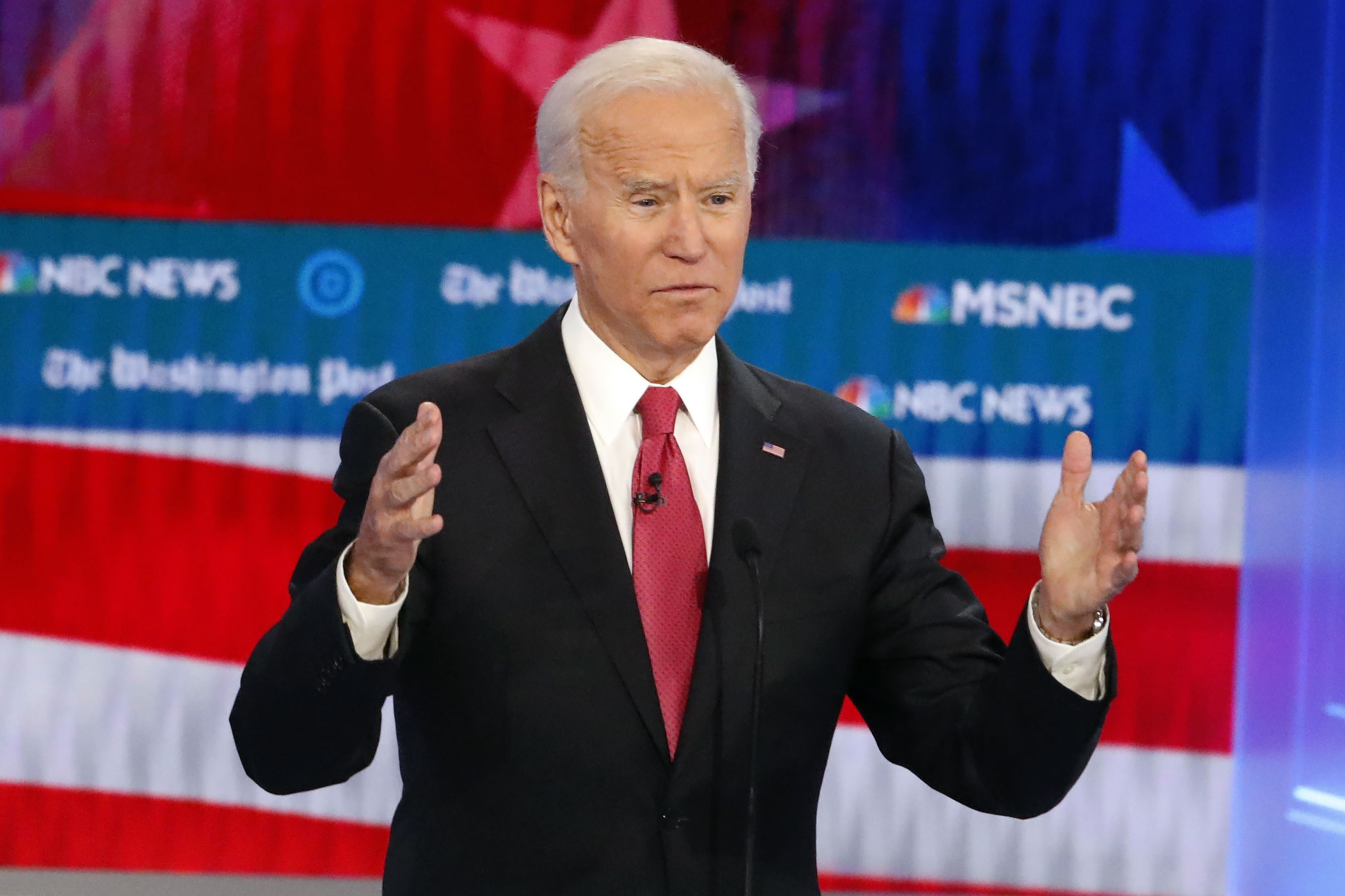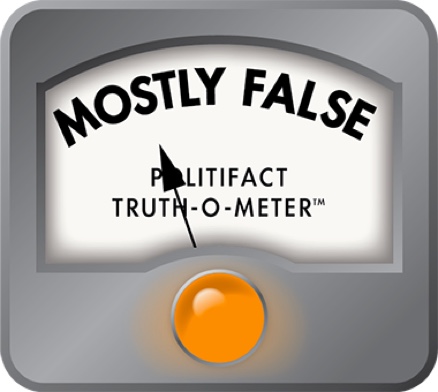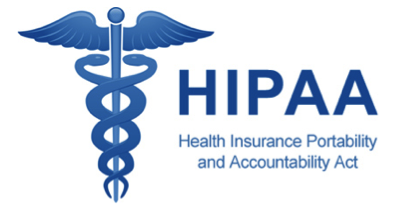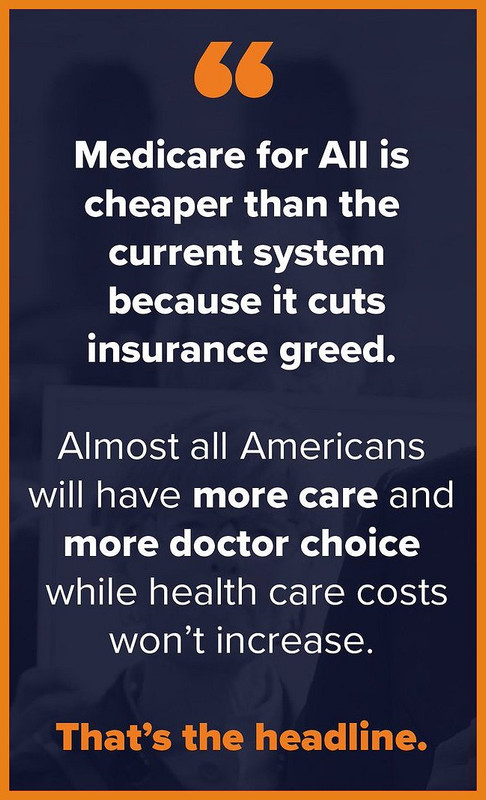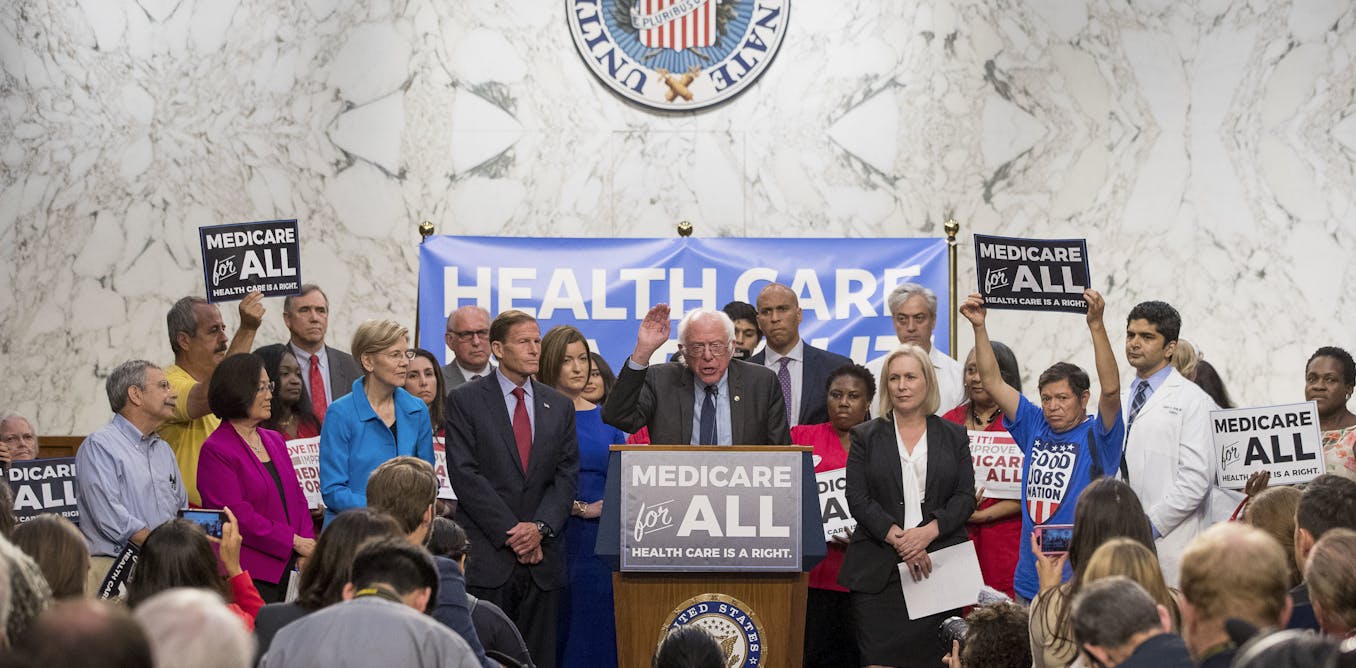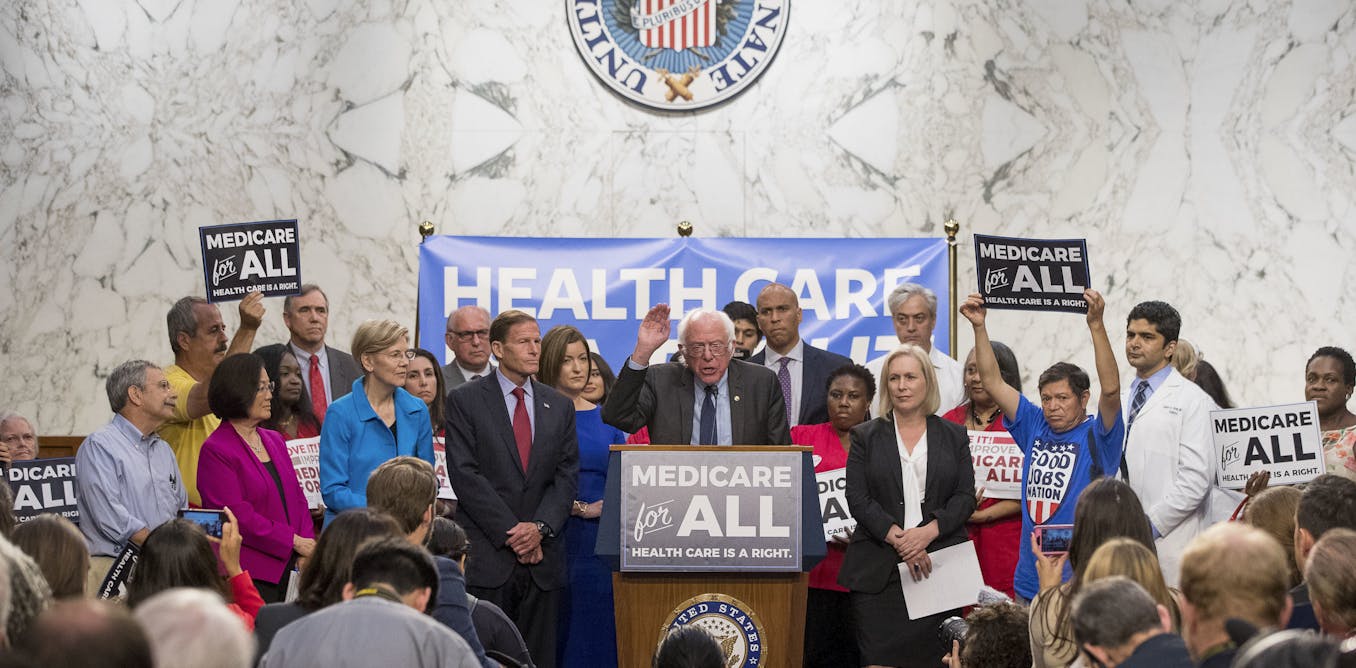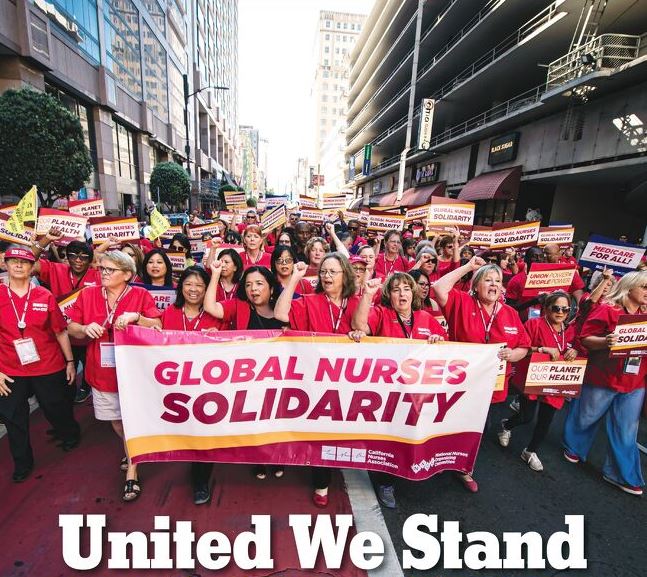
Nurses Know the Reality Of Healthcare
That’s Why They Want ‘Medicare for All ’
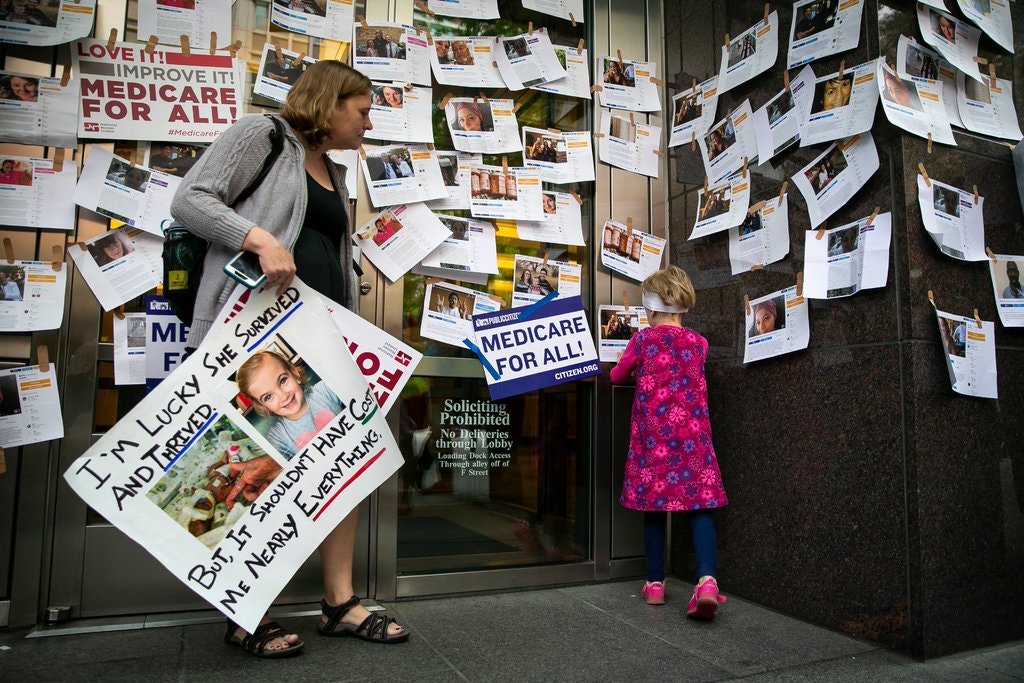
by Jeneen Interlandi | May 27, 2019 | https://www.nytimes.com/2019/05/27/opinion/nurses-medicare-for-all-health-insurance.html
The experiences that have turned the members of National Nurses United, the nation’s largest union for nurses, into vocal advocates for a universal, government-run health care system are numerous and horrific.
Renelsa Caudill, a Washington, D.C.-area cardiac nurse, remembers being forced to pull a cardiac patient out of the CT scanner before the procedure was complete. The woman had suffered a heart attack earlier that year and was having chest pains. The doctor wanted the scan to help him decide if she needed a potentially risky catheterization, but the woman’s insurance, inexplicably, had refused to cover the test.
Melissa Johnson-Camacho, an oncology nurse in Northern California, remembers a mother who had to ration the special bags that were helping to keep her daughter’s lungs clear. The bags were supposed to be changed every day, so that the daughter did not drown in her own fluids, but they cost $550 each.
And Karla Diederich, also from California, remembers saying a final goodbye to her friend and fellow intensive care nurse Nelly Yap in their hospital’s parking lot. Ms. Yap was dying of metastatic cancer. She was scheduled for another round of chemotherapy, but the hospital had changed owners while she was on sick leave and she’d lost her job — and insurance — as a result. “Nelly spent most of her life taking care of other people,” Ms. Diederich says. “And when she needed that care herself, it was not there.”
The women say that their professional experiences have led them to an inescapable conclusion: The motives of gargantuan for-profit health care industries — hospitals, pharmaceuticals, insurance — are incompatible with those of health care itself. They argue that a single-payer system, run by the federal government and available to all United States residents regardless of income or employment status, is the only way to fully eliminate the obstacles that routinely prevent doctors and nurses from doing their jobs.
Several proposals now working their way through Congress would aim to create just such a system. The nurses’ support for such proposals — the union has endorsed a bill put forth by Representative Pramila Jayapal of Washington — is somewhat surprising, because the zero-sum nature of American health policy tends to place them on the losing end of any major system overhaul. The money it will take to provide many more services to many more patients will have to come from somewhere, the thinking goes. And the paychecks of doctors and nurses are a likely source.
That calculus has not deterred the nurses.
Perhaps that’s because they see so much time and money wasted by the bureaucracy of the current system. By most estimates, the administrative costs of American health care surpass those of any other developed nation. Or maybe it’s because of the innumerable avoidable medical crises they constantly find themselves confronting. Patients go into heart failure because they can’t afford blood pressure medication, or gamble with their diabetes for want of insulin, then turn up in the hospital needing care that’s far more expensive than any preventive measure would have been.
Or maybe they just know that a steady job with decent health benefits does not exempt anyone from the arbitrary agonies of our current system. Ms. Johnson-Camacho recalls having to discharge a patient without essential chemotherapy — not because the patient was uninsured but because his insurer refused to cover the drug that had been prescribed. “I had just finished explaining to him how important it was to take this medication faithfully,” she says. “I told him, ‘Every day you skip it is a day that the cancer has to potentially spread.’ And then we had to send him home without it.”
Ms. Johnson-Camacho says another patient — a young man with a treatable form of cancer — was so overwhelmed by the cost of his care, and so terrified of burdening his family with that cost, that he told her he was planning to kill himself.
Anyone who has been to a hospital or seen a family member grapple with illness has at least one story like this. Nurses, who encounter the system daily for years or decades, have hundreds, and they know better than most how brutally such stories can end. “It’s barbaric,” Ms. Diederich says. “Crucial medical decisions are being made by businessmen whose primary goal is to make a profit. Not by medical professionals who are trying to treat their patients.”
The next remaking of American health care is still a long way off. Recent congressional hearings and a report from the Congressional Budget Office have helped to clarify the long roster of questions that lawmakers will have to address if they are serious about any of the many bills now circulating. But concrete answers to those questions have yet to materialize, and in the meantime, American patients are ambivalent. Polling suggests that a majority now support the idea of universal health care, but many are still wary of the trade-offs such an overhaul would require.
Proponents who want to persuade those skeptics would do well to have nurses make the case. “People say they are scared to have the government take control of their health care,” Ms. Diederich says. “But they should be scared of the people who are in control now.”
Comments
I’m a nurse. I worked on the insurance side and the hospital side as an RN Case Manager. I wept for joy in March, 2010 when President Barack Obama signed the Affordable Care Act. You know why? Because I walked in the trenches of a very large hospital during the recession and heard story after story from patients who had lost their jobs, no fault of their own, and therefore lost their healthcare insurance. Decisions needed to be made regarding their care and treatment. That doesn’t sound like much to many people, especially our Republican legislators, but the difference between life or death, or going broke or not going broke, descended on thousands and thousands of people. The Affordable Care Act gave people a chance. People, just like most of us, who just needed healthcare, plain and simple. We may be faced with the dilemma of Medicare for All. On the one hand, would Republicans ever pass such a bill? They don’t seem to care how people receive healthcare in their very own country, or if people even are able to receive it. Insurance companies love non approvals, their goal many times, because then they can make more money. I know that side too, and am proud to say I approved every single cochlear implant that came across my desk, because I personally approached the medical director to approve them and backed up my pleas. One example of the extra mile. However, as long as we have legislators who run their votes for insurance companies, I fear further implementation.
Comments
It is my sincerest desire that participants in the debate regarding health care stop and never again use the word " provider," to describe the insurance industry. The hospital worker who changes your bed pan, the nurse who cares for your needs, the technician who rolls your bed to the X-ray lab, the orderly who changes your sheets, the doctor who saved your life- these are all examples of real " Providers" ( with a capital P) Insurance companies are hyper- capitalist companies, middle men who make profit from our universal need for health care. They place profit above all else. They assure that a bloated bereaucracy of claims reviewers, rule enforcers, accountants and medical experts you will never meet, and tell you and doctors what can or cannot be done remain firmly entrenched between you and the real providers. Insurance companies are not providers in any conceivable sense of the word. they are gate keepers. They are toll booths. They are businesses which make enormous amounts of profit, and hold your life in their hands. For them to assume the mantle of being a " provider" is absurd, if not obscene, abuse of the language. Please stop the fear mongering and fake distress at the possibility of the insurance industry being removed from the marketplace of valuing our lives and medical care. Healthcare is a right in virtually all Western industrialized societies, except for the US. Insurance Companies are NOT " providers'
Comments
I'm a RN since 1980. Shocked every single day by what I see happening in healthcare. Insurance companies are running everything and putting lives in peril to save money for themselves. This has been going on for decades and only getting worse and worse. It should be criminal to let people die or suffer needlessly. It should be criminal to force people into bankruptcy because their child is ill. But they do it every day and no one seems to care. Congress is a joke. The Insurance lobby owns them. Plus, they have excellent health insurance, so it really doesn’t matter to them quite honestly.
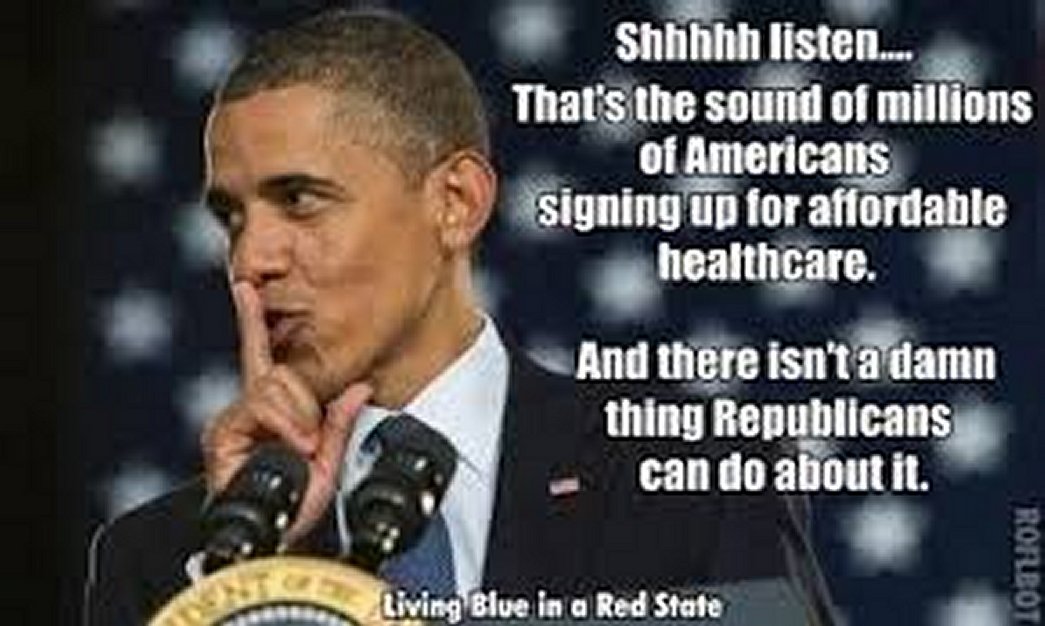
Originally posted in June 2011 https://www.bgol.us/forum/threads/ryan-vs-obamas-economic-plans.595460
....This health care issue, Medicare/ Medicaid , is not very complex, but the corporate television media (ABC- CBS- NBC/MSNBC -FAKE- CNN -) all refuse to break-it-down in simple form for the majority of their viewers who only watch television as their only source of “news?” and information.
Why? It’s simple, $$$$$$$$$ money. Health care companies and pharmaceutical companies reliably spend billions of dollars on television commercials on these networks. That’s why you get bombarded with Viagra, Cialis & Levitra limp-dick fix drug commercials. You get these ‘image building’ commercials from Aetna, United HealthCare, Cigna and all the other “Health Care Mafia” companies.
Now in case you haven’t figured it out— what is the business model of the “Health Care Mafia”? It’s very simple; you don’t need a MBA to figure it out. The “Health Care Mafia” is in the business of denying as much health care as possible, they are the ultimate ‘cockblockers’ — they exist to deny as vigorously as possible your ability to receive medical care that will keep you alive.
How does it work? You pay monthly premiums to the “Health Care Mafia” usually with a percentage paid by your employer if you have a job where such ‘insurance’ is offered. Let’s make it simple; let’s assume medium size corporation XYZ has 1,000 employees who enroll in the “Health Care Mafia” insurance plan. The typical plan premium is $1,000 a month, multiply that by 1,000 employees and that’s $1,000,000 ( One Million Dollars) a month going to the “Health Care Mafia” . The “Health Care Mafia” gets that $1,000,000 and immediately puts 25% to 47% of that money into their vault. It’s like a mobster “paying tribute” to his Godfather. This “tribute” money pays for the “Health Care Mafia” companies private jets, stretch limos, 4**** Star private dining rooms, and the multimillion dollar executive compensation. One health care mafia kingpin made so much money collecting “tribute” that he had to give back $620,000,000. (620 Million Dollars) The executives and senior officials at these “Health Care Mafia” companies are stacking serious paper — and they are not the doctors; they are just the middleman between you and your doctor. You can read all about how it works from an insider.
Oh what about health care you ask. Let’s say, god forbid, your doctor tells you that you have fulminant myocarditis a severe condition but one that can be treated successfully over time 93% of the time. The doctor ask you if you have ‘insurance’. You say yes and hand him your insurance card. He calls the “Health Care Mafia”representative and tells them about your condition. That representative is financially incentivized (earns bonus money) to basically tell your doctor to send you home with a bottle of Tylenol . Your doctor, if he’s ethical & empathetic will ‘push-back’ and fight to get a treatment regimen approved for you. The “Health Care Mafia” representative will also fight to give you as little coverage and the cheapest procedures available. It’s very simple, the majority of the major “Health Care Mafia” companies are for-profit entities whose stocks trade publically on the New York Stock Exchange. The less coverage they provide you, the more money the make, the higher the stock price goes up, the more value the executives stock options are worth. It’s not about your health and medical care, it’s about the money. They are the shot-caller between you and your doctor, and your life.
Remember the 25% to 47% of your premium money that “Health Care Mafia” puts in their vault right off the top as soon as they get it? President Obama’s Affordable Health Care Act which the corporate media calls ObamaCare limits the skim to 15%. The RepubliKlans are trying to repeal this part of the bill along with many other provisions since they can’t repeal the whole thing. The United States despite the fact that 59 million people have no health care coverage— (that’s right no Medicare/ Medicaid- just go to the emergency room) — spends more as a percentage of GDP than any other major country on the planet earth. (look below)

The United States which is the world's wealthiest, spends by far the most on health care. The United States spends around $8,700 per capita each year on health care, more than double the OECD average and well more than second place Switzerland.
Despite the high spending, Americans are not anywhere near the world's healthiest. More than 35% of Americans are obese, one of the highest rate in the world, and exceptionally high compared with other countries spending the most on health. The United States is also the only top 10 country for health spending where the life expectancy does not exceed 80 years. Also, infant mortality has increased in the United States. While in 2000, the incidence of infant mortality in the United States was lower than the OECD average, today it is higher.
Meanwhile the “Health Care Mafia” during the cheney-bush regime, expending rapacious greed, raised their health care premiums 200% to 500% more than the rate of inflation.
The “Health Care Mafia” spent $1,500,000 per day 24/7 to
Last edited:



